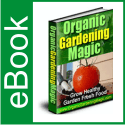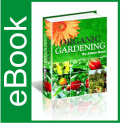Learn the essential things in planning Vegetable Garden Design
Learn the essential things in planning Vegetable Garden Design
Article by Marko Paul
The benefits of cultivating in a raised garden are generally known; excellent drainage, pest minimization, and ease of management, all can be adapted to your veggie garden, as well.The things you do differently when you design your garden to be raised versus level are not great in number…If one edge of your raised garden ends in an abutment of some sort, then you can consider planting items there that will cling to a trellis.You can really go to town with your gardening when you have a situation where you do not have to worry about disease or pests, and when keeping your eye on the soil moisture conditions is so very easy.Your taller growing plants should be planted centrally while your shorter plants should go towards the perimeter. This makes it much easier to tend to the lot of them.Plant leaf lettuce and radishes in the same spot and time frame so that when the lettuce is ready to be collected, then the radishes will be well entrenched.Those two are ideal crops for the edges of your plot, but don’t neglect to include some herbs in vegetable garden layout.If you are planning on potatoes, then put them on the end of the rows where it will be much easier to deal with them. Locating them here will let you tend to them as you build up their mounds.If your design includes easily removable edges, then harvesting your potato crop should be quite a bit easier.Plant your early-season, rapid growers at the beginning of the growing season and all in the same place. This will allow you to add your late-season items without perturbing your producing plants.This is exactly why wise garden design is so critical. There is no advantage to getting unnecessarily complicated; you can work from a sketch on a piece of paper.Make modifications to allow you to maximize use of space. Are the tomatoes going to grow too high and end up shadowing the onions? Or will those tomatoes, which initially grew in a planter, be harvested and out of the way when the onions need more sunlight?Will your beloved squash and zucchini plants grow to invade the rest of your plot, or will they simply move into the space given up by your early producing items? And is it really necessary to have five (!) zucchini plants? You’d do better aiming for a variety of veggies rather than a boatload of a few species.Don’t plant just a single tomato species, choose several. Sow a number of different kinds of greens: leaf lettuce, head(or bib) lettuce, cabbage, chard, mustard greens, collards, kale, etc.This way, you will not find yourself eating the same veggies day after day, but instead delighting in the dazzling variety gracing your table throughout the year.
About the Author
Want to find more information about vegetable garden planning, then visit our site to know the best advices about vegetable garden design.

 November 12, 2011
November 12, 2011 







